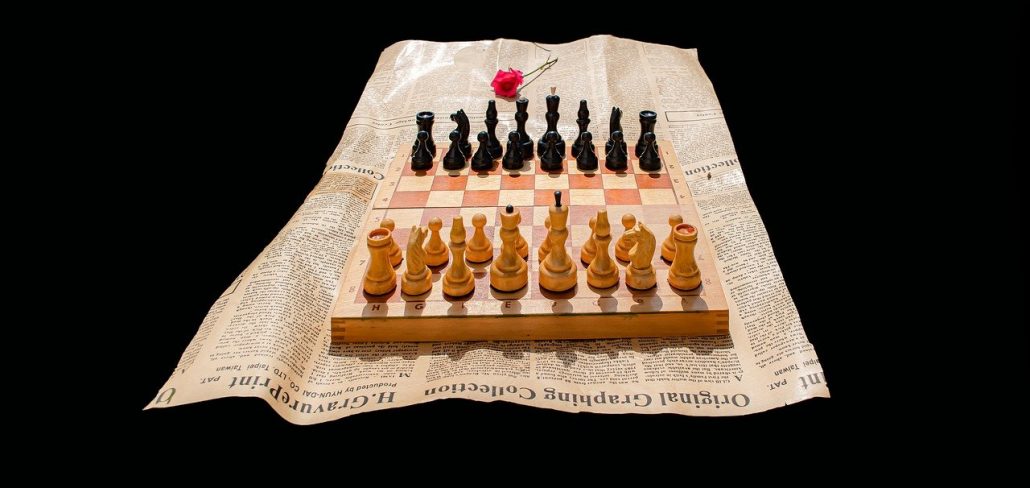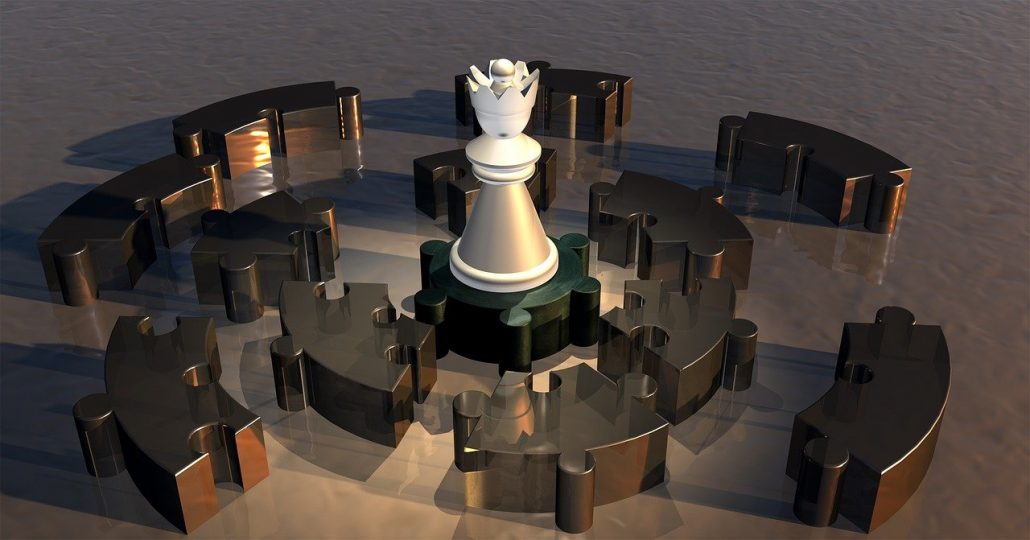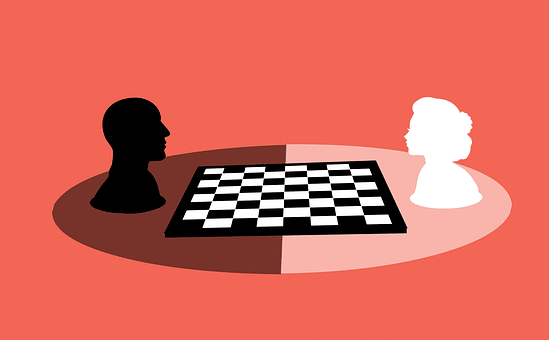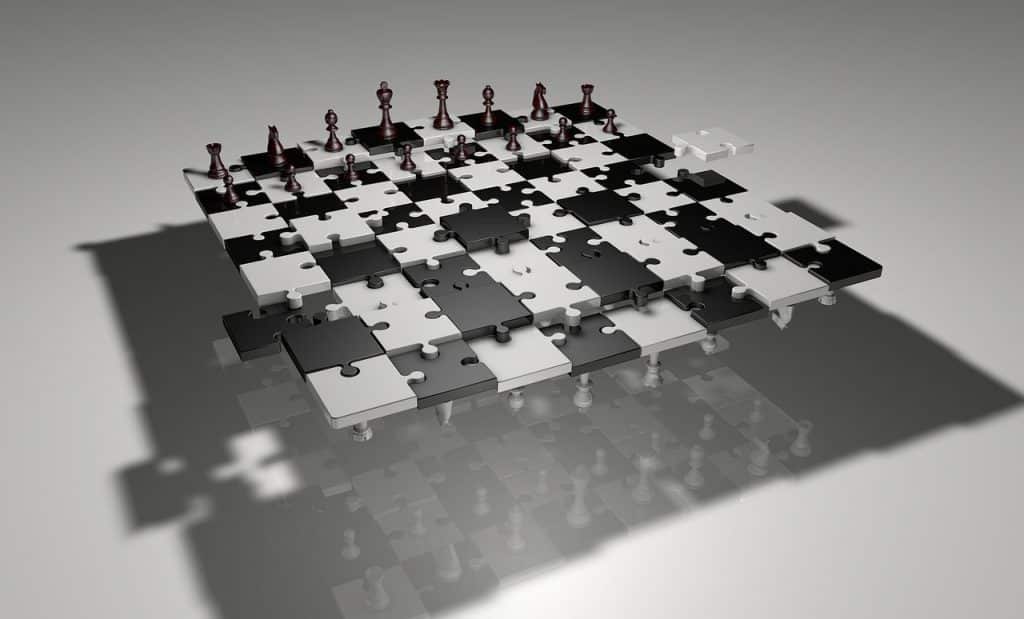Table of Contents
Chess patterns
There is something that helps the chess player understand when there is a combination over the board, a chess pattern. It is something almost invisible, if you are an amateur chess player, you will surely understand me.
Nobody tells you, but you know it, you can smell something, what is it? Here I can surely get an advantage by a combination. The chess patterns are a configuration of pieces that tells us, there is something important we need to pay attention to.
Your mind can remember more things than what you think, you are not conscious of the power of memory your mind has. This is the reason why a chess master doesn’t need to look for combinations, they come to him naturally.
It’s not magic, for example, let’s say you see this configuration of pieces here:
You don’t need to be a master to realize there can probably be some tactical trick to get the black king mated.
You have probably seen some other games where a master mates his opponent this way, you have recognized a pattern. We will study how chess patterns work, and how learning them will improve your win rate in chess.
How important are the chess patterns?

When you first look at a new chess position you probably look for the forceful moves, and that is natural. You were probably taught that is how you should do it, and this is the first step to get tactics going.
When you put yourself in “tactic mode” you are open to every possibility, you start looking at different moves, but here is the first question:
There are a lot of possibilities in a chess position, how will you choose 3 or 4 candidates moves in a position where there are 50 possible moves. Here is where the chess patterns come into play.
There is a “sense” called intuition, this is your chess sixth sense, intuition will tell you what are the possible best moves in a position. It is something automatic, intuition is based on the number of chess patterns you have seen previously.
If you have solved a lot of tactics puzzles and reproduced a considerable amount of chess games, you will have many chess patterns in your mind. You never forget them, you store them in the mind, and when you look at a position of your games your brains will say “I have seen this before!”
Become a chess patterns expert detector

There are various ways to improve the number of chess patterns you have on your mind, almost everything will help. The best way to do it is to practice, practice in any way it comes will help.
Tactical puzzles, reproducing master’s games, watching some games through the internet, even playing by yourself, will improve your patterns.
But one of my favorites is undoubtedly solving chess combinations and training with calculation exercises. Depending on your level you will choose the difficulty of your puzzles, but let us state a difference.
In my personal opinion, it is not the same as a “chess puzzle” and a “chess combination”. There are some differences. A chess puzzle may be something simple, maybe a mate in three moves, which is good, but when you reach a certain level you need to get to the other level.
The chess combination is a mix between various tactical motifs, given in a position where the solution is more than 3 moves away and there are many variations to calculate. I recommend you check out the book 5000 Polgar sisters’ combinations, here there are a lot of puzzles for advanced players.
Chess patterns in grandmaster’s mind

The way that chess patterns work in the grandmaster’s minds is absolutely amazing, the best part is that you can reach this level. Grandmasters have an incredible ability to retain chess positions in their minds.
Grandmasters can remember a position they saw 30 years before if they are shown the same position again today. The reason for this is that they have a wide catalog of chess positions they have seen.
How many chess positions have a grandmaster seen in his/her whole chess career? A lot, but seriously, A LOT.
This is one of the reasons why chess is beneficial for memory, chess improvement includes remembering many chess patterns.
This is the reason why in many master’s books commented you often see this kind of comment: I had this position against a grandmaster 6 years ago in a tournament, and it went like this…
They remember the chess patterns.
You can develop the same ability, it’s not anything supernatural or anything. Remember grandmasters are not mutants that were created in a lab, they are the same as you are, a human, they trained a lot, that’s all.
Examples of chess patterns

As we saw in the first part of this post, a chess pattern is a configuration of pieces or a certain possibility over the board that you have seen before.
You can test your chess pattern recognition with the following diagrams if you desire. However, the final purpose of this is to show to the reader, in a practical and participative way, an example of a chess pattern on the board.
- White to play
2. Black to play
3. White to play
These are positions in which you can win the advantage, I will not tell you if you can mate or win a pawn, the answers will be at the end of the post.
- 1. Ne7+! Kh8 2. Ng6+ hxg6 3. hxg3+ Qh4 4. Rxh4#
- 2… Qxg3 (the f2 pawn is pinned
- 1. Nf6+ gxf6 2. Tg5+! (otherwise black perpetual check the white king, also is the straightest continuation) fxg5 3. Qh8#
You may also like:
5 Ideas to Not Be a Beginner in Chess
The Tactic In Chess – Improve your chess level to win more games






